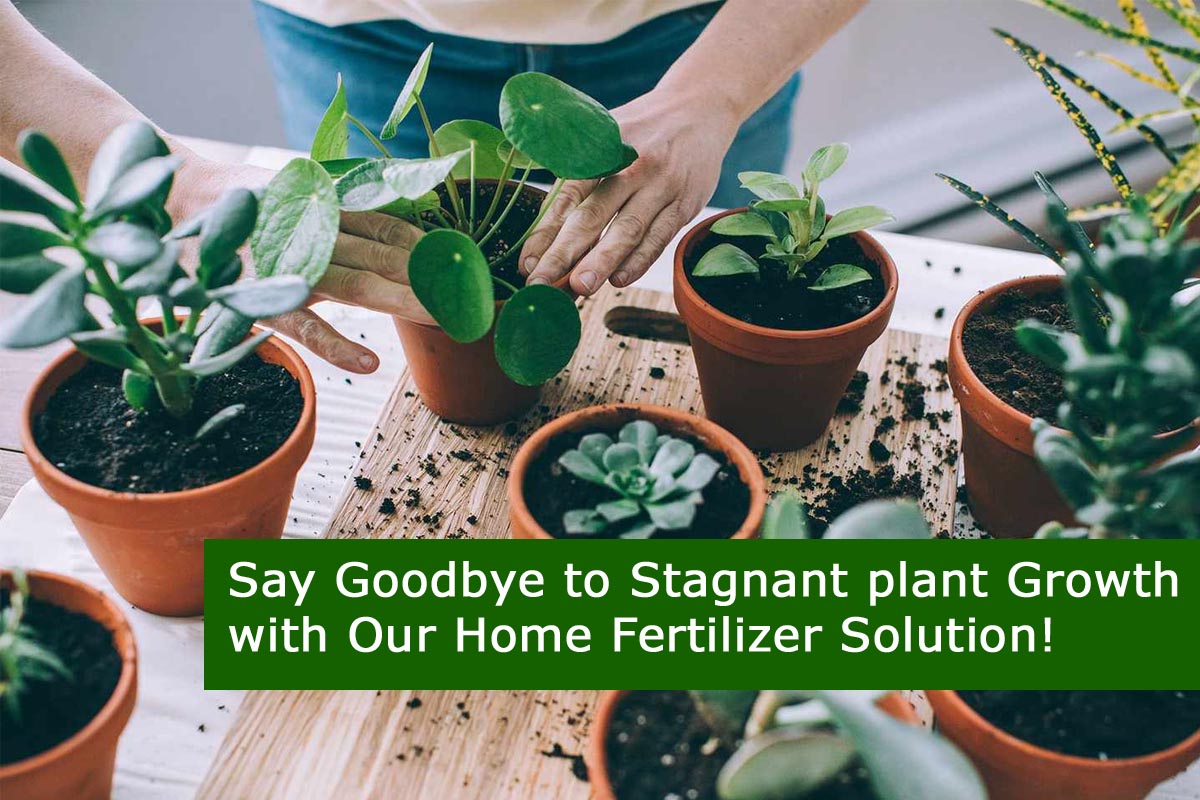
Say Goodbye to Stagnant plant Growth with Our Home Fertilizer Solution!
The desire to adorn balconies and rooftops with lush green plants and vibrant, colorful flowers is shared by many. People invest time and effort into nurturing these plants, yet sometimes, despite their care, the growth of the plants suddenly halts. Even with adequate water and sunlight, the growth seems to stagnate. But do you know why and when this happens?
The truth is, plant growth can abruptly stop when they lack essential nutrients. This deficiency leads to stunted growth, gradual withering, and eventual drying out of the plants. In such situations, people often resort to expensive fertilizers available in the market, many of which contain chemicals. Although these fertilizers may provide some relief, they often come with a dose of harmful chemicals.
However, if you wish to use natural fertilizers for your plants’ growth, you can easily create one using some household items. Using these natural fertilizers can ensure that your plants remain green and healthy.
Also Read This : Summer Survival Guide: How to Keep Your Basil Plant Thriving and Hydrated
There are several reasons why natural fertilizers are preferable to chemical ones:
Environmentally Friendly:
Natural fertilizers are made from organic materials, making them environmentally friendly. They don’t contain harmful chemicals that can leach into the soil and water sources, posing a threat to ecosystems.
Safe for Plants:
Natural fertilizers provide a balanced supply of nutrients to plants without the risk of overloading them with harmful chemicals. This promotes healthy growth and strengthens the plants’ natural defenses against pests and diseases.
Cost-Effective:
Making your own natural fertilizer at home using household items is a cost-effective alternative to purchasing commercial fertilizers. It saves money while ensuring the health and vitality of your plants.

Also Read This : Growing Lemongrass at Home: A Step-by-Step Guide for Beginners
How to Make Natural Fertilizer at Home
Make Liquid Fertilizer from Soybeans
Ingredients:
- 1 cup soybeans
- 2 cups water
- 1 bottle
Method:
- Soak the soybeans in water overnight.
- The next day, remove the soaked soybeans from the water and set them aside.
- Strain the remaining water and fill it into a bottle.
- Seal the bottle with a lid and store it in a cool, dark place.
Also Read This : Harnessing Nature’s Power: Rose Essential Oil as a Safe Pesticide for Organic Agriculture
How to Use:
You can store this soybean liquid fertilizer in a bottle. It’s even better if you use a spray bottle. Now, use the bottle to spray the fertilizer onto the leaves of your plants. But remember, you shouldn’t spray the fertilizer directly onto the leaves. Instead, dilute it with water before spraying. This prevents pests from sticking to the leaves. You can use this soybean liquid fertilizer twice a week. But remember, when you use this liquid fertilizer for the first time, apply it to a small part of the plant to see if there are any side effects. Soybean-derived liquid fertilizer is a good source of nitrogen, which helps promote plant growth and development. It’s a natural and cost-effective option that can help reduce the use of chemical fertilizers.
Also Read This : 5 Genius Hacks to Keep Insects Away from Your Curry Leaf Plant!
Make Liquid Fertilizer from Rice Water
The water left over after cooking rice, also known as “rice water,” can be an excellent fertilizer for plants. It’s a good source of starch and NPK (nitrogen, phosphorus, and potassium), which are essential nutrients for plant growth and health.
How to Use Rice Water:
- When you wash rice, collect the water separately in a container. This water is rich in starch and can be used to water plants.
- The water left over after cooking rice can also be used as rice water. Just make sure it doesn’t contain any salt.
- When watering plants, dilute the rice water with water in a 4:1 ratio.
- You can also spray rice water onto the leaves of plants. This allows the plants to directly absorb the nutrients.
Also Read This : Easy Steps to Grow Capsicum in a Paot at Home: Your Guide to Fresh Peppers
By using these natural fertilizers made from soybeans and rice water, you can provide your plants with the essential nutrients they need to thrive. These homemade fertilizers are not only effective but also environmentally friendly and cost-efficient. So why not give them a try and watch your plants flourish!




